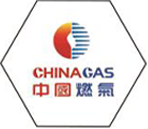
Nov . 25, 2024 06:38
Back to list
Natural Gas Pressure Regulation System for Efficient Energy Management
Understanding Natural Gas Pressure Regulators
Natural gas is one of the primary sources of energy worldwide, powering homes, businesses, and industries. However, the distribution of natural gas requires careful management of pressure to ensure safety, efficiency, and reliability. This is where a natural gas pressure regulator, or مخفض ضغط الغاز الطبيعي in Arabic, comes into play.
What is a Natural Gas Pressure Regulator?
A natural gas pressure regulator is a device used to control the pressure of natural gas within a pipeline system. Its primary purpose is to reduce the high pressure of the gas coming from the supply line to a lower, more manageable pressure suitable for safe use in residential, commercial, and industrial applications. Without a pressure regulator, the high pressure of the gas could lead to dangerous leaks, equipment failure, or even catastrophic explosions.
How Does a Pressure Regulator Work?
The operation of a natural gas pressure regulator is based on a balance of pressure forces. When natural gas enters the regulator, it typically does so at a high pressure. The regulator is designed to maintain a constant output pressure, regardless of variations in the input pressure or downstream demand.
The main components of a pressure regulator include an inlet port, a diaphragm, a spring, and an outlet port. The diaphragm responds to changes in downstream pressure. If the pressure drops below the set point, the diaphragm moves to open the valve, allowing more gas to flow through until the desired pressure is reached. Conversely, if the pressure rises too high, the diaphragm closes off the flow, preventing excess gas from entering the system.
Importance of Safety and Maintenance
Natural gas pressure regulators are crucial for maintaining safety within gas distribution systems. Regular maintenance and inspection are essential to ensure these devices function properly. Potential issues such as leaks, mechanical failure, or corrosion can significantly impact performance and safety. Therefore, gas companies and users alike must adhere to stringent inspection schedules and promptly address any signs of malfunction.
Additionally, the installation of pressure regulators must comply with local and national regulations to ensure optimal performance and safety. Choosing the right type and size of regulator for a specific application is essential, as improper selection can lead to either insufficient gas delivery or excessive pressure.
مخفض ضغط الغاز الطبيعي

Types of Pressure Regulators
There are generally two types of natural gas pressure regulators line pressure regulators and appliance regulators.
1. Line Pressure Regulators These are used in distribution systems to reduce the pressure of gas flowing through pipelines. They are typically large and designed to handle substantial changes in pressure while ensuring consistent flow.
2. Appliance Regulators These smaller devices are used at the point of use, such as in residential or commercial appliances like furnaces, stoves, or water heaters. Appliance regulators provide the final step of pressure reduction to ensure that the gas is at a safe level for consumption.
The Future of Natural Gas Regulation
With the continued growth in natural gas usage, advancements in technology are shaping the future of pressure regulation. Smart regulators equipped with sensors and telemetry systems enable real-time monitoring and control of pressure levels. This innovation allows for better management of gas distribution systems, immediate detection of issues, and the ability to ensure compliance with safety standards.
Moreover, as the world moves toward cleaner energy solutions, the role of natural gas as a bridge fuel will increasingly be highlighted. Pressure regulators will continue to play a critical part in ensuring that this energy source remains a safe and reliable option for consumers.
Conclusion
In conclusion, natural gas pressure regulators serve an invaluable role in the safe and efficient distribution of natural gas. Their capacity to control pressure not only safeguards infrastructure and users but also facilitates the continued use of natural gas in our energy landscape. As technology advances, the efficacy of these devices will only improve, further enhancing safety and reliability in the natural gas sector. Understanding the importance of these regulators can help both consumers and industry professionals to appreciate their role in energy management and safety.
Next:
Latest news
-
Safety Valve Spring-Loaded Design Overpressure ProtectionNewsJul.25,2025
-
Precision Voltage Regulator AC5 Accuracy Grade PerformanceNewsJul.25,2025
-
Natural Gas Pressure Regulating Skid Industrial Pipeline ApplicationsNewsJul.25,2025
-
Natural Gas Filter Stainless Steel Mesh Element DesignNewsJul.25,2025
-
Gas Pressure Regulator Valve Direct-Acting Spring-Loaded DesignNewsJul.25,2025
-
Decompression Equipment Multi-Stage Heat Exchange System DesignNewsJul.25,2025

